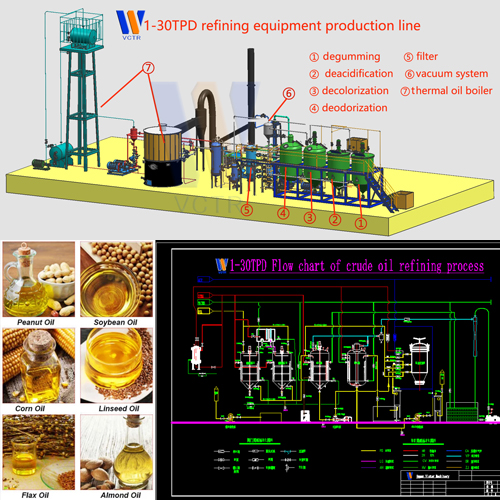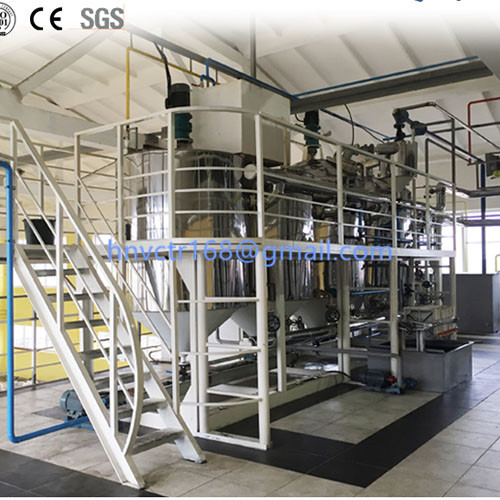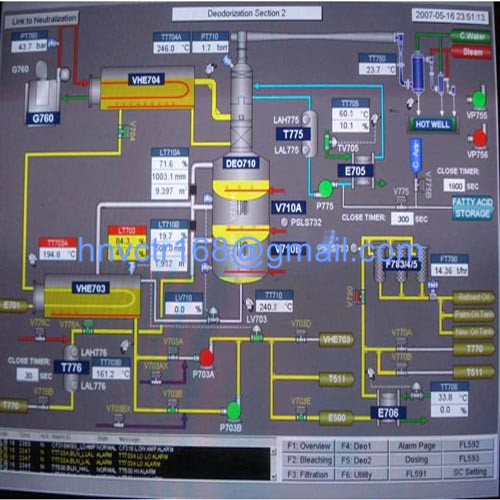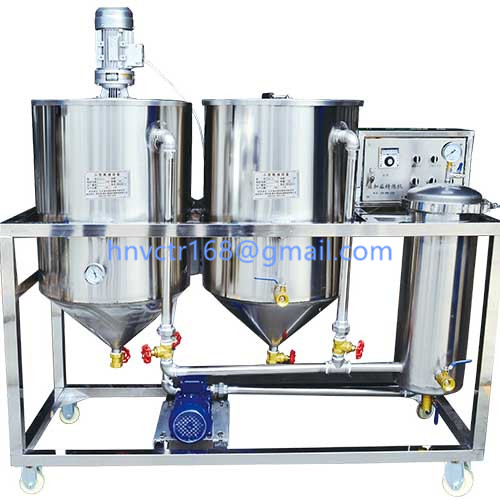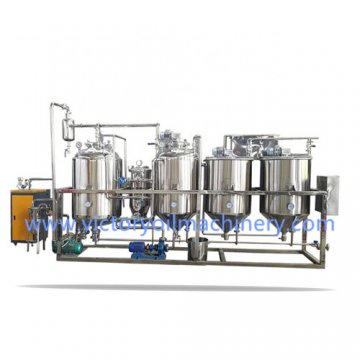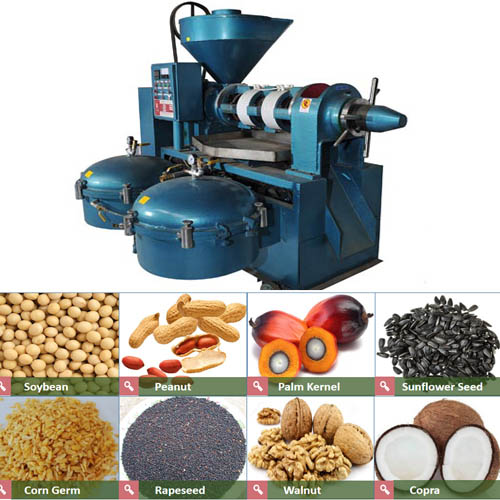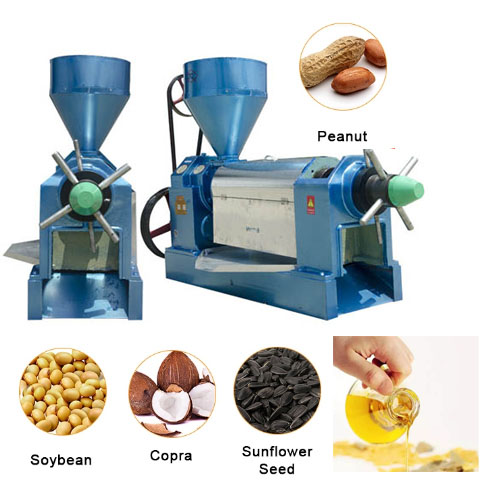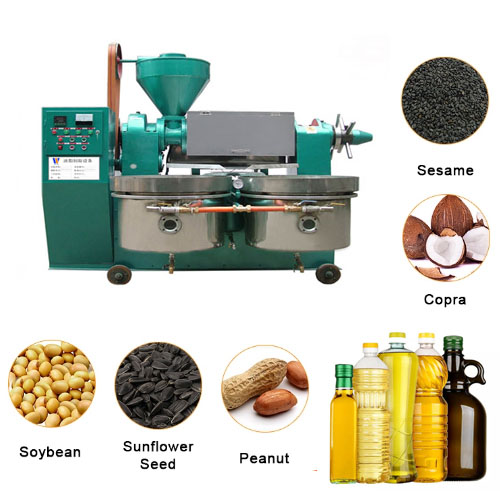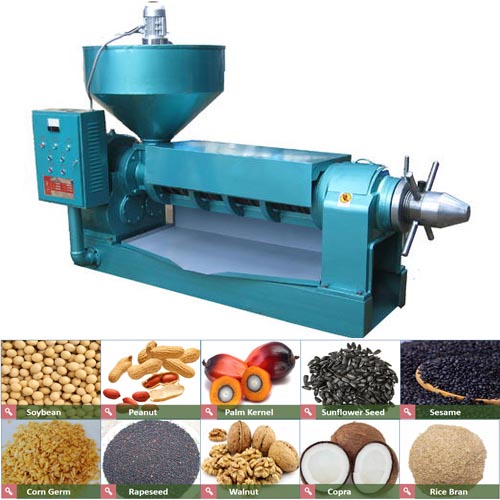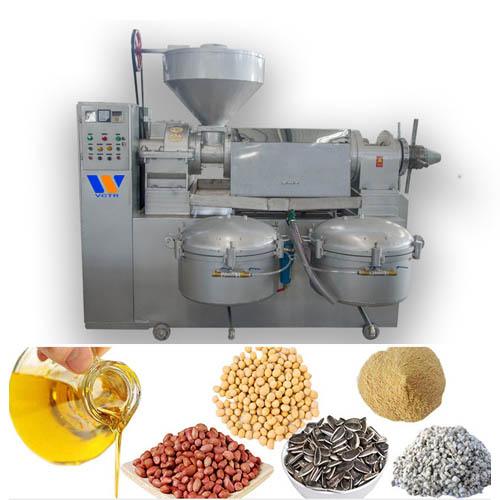Development history of oil deodorization process(part2)
In the United States, Eckstein invented the first industrial oil deodorization device in 1891. Direct steam was injected into the high temperature (160-175°C) alkali refining oil, which can greatly improve the taste of the oil. The most successful deodorization process in the United States was developed by Wesson (the pioneer of oil refining process-Wesson) in Southern Cottonseed Oil Company in 1900. This process was not patented and kept secret for a period of time, but this may be the first vacuum deodorization technology in the United States. The quality of Wesson's deodorized oil has been the world's edible oil standard for decades.
In 1948, the United States launched a larger operating system, and Bailey developed a semi-continuous Girdler deodorizer, which is a stacked shallow dish bubble type deodorizer. The oil in each layer is successively heated, gassed, deodorized, thermally decolorized and cooled. At the same time, a low-pressure heat transfer medium (such as heat transfer oil) is used to make the design of high-temperature operating equipment easier.
Benjamin Thurman developed a continuous deodorizing equipment for Humko Equipment Company (Kraft Food Division), which was patented in 1948 and was successfully used in factories until the 1970s. Thurman's design has 7 vertical stacked horizontal discs. Under vacuum conditions, 4 of them are used for deodorization and 3 are used for cooling.
In the mid 1970s, the thermosyphon method was used as a heat recovery absorbent, and Simon-Rosedowns obtained a patent for deodorization. In a true semi-continuous system, heat recovery can exceed 40%.
In the 1970s, A. Athanassiadis developed SCD (Semi-Continuous Deodorizer) for Desmei.Frank Sulliven of the United States designed it for Pallmco Refinery and put it into production in 1974. The useful by-products obtained from physical refining are changed to the design of a fat condenser to handle the high distillate load.
In 1970, the film theory began to experiment again, and for the first time the principle of packed tower was applied to the oil deodorization of grease and obtained a patent (Procter & Gamble). Compared with the "jet shallow tray" deodorization tower, its advantage is that under the same conditions, the consumption of stripping steam is reduced by more than half compared with the shallow tray type.
In the mid-1980s, Alfa-Laval Company introduced a new type of packed tower large-scale deodorizer, using more effective structural corrugated packing. At the same time, the feasibility of thermal decolorization before deodorization has also been verified. It was not until the 1990s that film deodorization was widely recognized and industrialized. For example, the "variable temperature decolorization" and "thermal decolorization (pre-deodorization)-packed tower deodorization" combined processes (1993) launched by the German F.H company.
Over the years, oil deodorization has gradually evolved from a "simple" process to a key unit operation, which has a great impact on the quality of refined oil. In the current edible oil refining, oil deodorization process is also a process of removing free fatty acids (physical refining) and volatile pollutants, and unwanted pigments are degraded (thermal decolorization). Although the principle of this process has not changed much since its first application, the deodorization technology itself has changed a lot.
In 1948, the United States launched a larger operating system, and Bailey developed a semi-continuous Girdler deodorizer, which is a stacked shallow dish bubble type deodorizer. The oil in each layer is successively heated, gassed, deodorized, thermally decolorized and cooled. At the same time, a low-pressure heat transfer medium (such as heat transfer oil) is used to make the design of high-temperature operating equipment easier.
Benjamin Thurman developed a continuous deodorizing equipment for Humko Equipment Company (Kraft Food Division), which was patented in 1948 and was successfully used in factories until the 1970s. Thurman's design has 7 vertical stacked horizontal discs. Under vacuum conditions, 4 of them are used for deodorization and 3 are used for cooling.
In the mid 1970s, the thermosyphon method was used as a heat recovery absorbent, and Simon-Rosedowns obtained a patent for deodorization. In a true semi-continuous system, heat recovery can exceed 40%.
In the 1970s, A. Athanassiadis developed SCD (Semi-Continuous Deodorizer) for Desmei.Frank Sulliven of the United States designed it for Pallmco Refinery and put it into production in 1974. The useful by-products obtained from physical refining are changed to the design of a fat condenser to handle the high distillate load.
In 1970, the film theory began to experiment again, and for the first time the principle of packed tower was applied to the oil deodorization of grease and obtained a patent (Procter & Gamble). Compared with the "jet shallow tray" deodorization tower, its advantage is that under the same conditions, the consumption of stripping steam is reduced by more than half compared with the shallow tray type.
In the mid-1980s, Alfa-Laval Company introduced a new type of packed tower large-scale deodorizer, using more effective structural corrugated packing. At the same time, the feasibility of thermal decolorization before deodorization has also been verified. It was not until the 1990s that film deodorization was widely recognized and industrialized. For example, the "variable temperature decolorization" and "thermal decolorization (pre-deodorization)-packed tower deodorization" combined processes (1993) launched by the German F.H company.
Over the years, oil deodorization has gradually evolved from a "simple" process to a key unit operation, which has a great impact on the quality of refined oil. In the current edible oil refining, oil deodorization process is also a process of removing free fatty acids (physical refining) and volatile pollutants, and unwanted pigments are degraded (thermal decolorization). Although the principle of this process has not changed much since its first application, the deodorization technology itself has changed a lot.
In 1969, Martinenghi G.B. first proposed the prototype of dry cooling technology and applied for a patent for fat acid deodorization technology and equipment. The dry-cooling vacuum device uses the temperature of -40~-15℃ to condensate the condensable gas in the oil deodorization process steam, thereby reducing the load of the lower vacuum pump. In 1984, Merk and others improved the technology and applied for a patent for the oil deodorization process. Currently Bunge (Canada, North America), Cargill (Netherlands, North America refineries), Louis Dreyfus (Canada 1200TPD rape oil refinery), Wilmar (Netherlands 1000TPD palm oil refinery) and other factories have widely used this technology.
Modern oil and fat deodorization technology has been and will continue to be steadily improved to meet more efficient processing, lower production costs, greater oil production (currently 1500TPD refinery seems to be standard), and better deodorized distillate prices. More importantly, more and more people pay attention to the influence of the parameters of the deodorization process on the nutrition, quality and food safety of edible oils and fats (such as trans fatty acids, etc.).

